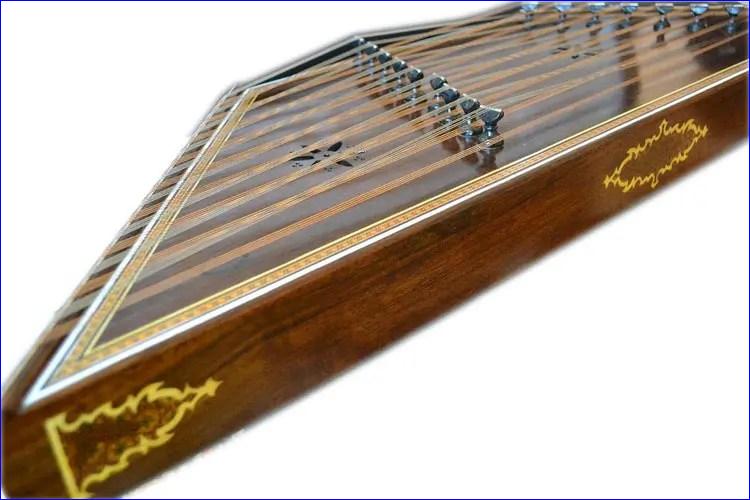


The original santur, a creation of wood and stones, featured strings crafted from goat intestines. Remarkably, the Mesopotamian santur has been hailed as the progenitor of several renowned musical instruments, including the harp, the Chinese yangqin, the harpsichord, the kanun/qanun, the cimbalom, and even the American and European hammered dulcimers.
The very name 'santur' may derive from the Persian 'sanṭīr,' which in turn may have been borrowed from the Greek 'ψαλτήριον' or 'psalterion.' This linguistic connection weaves an intricate tapestry of cultural exchange.
A typical Persian santur has 72 strings with two sets of nine bridges, providing a sonorous range spanning approximately three diatonic octaves. The santur includes oval-shaped mezrabs (mallets), held gracefully between the thumb, index, and middle fingers. These mezrabs, fashioned from wood, occasionally have cotton or felt-wrapped tips.
The right-hand strings are made of brass or copper, while the left-hand strings resonate with the strength of steel. A total of 18 bridges divide the santur into three distinct positions. Over each bridge, four strings unite in harmonious unison, gracefully spanning the instrument's breadth. These strings are partitioned into three sections, each encompassing nine pitches;- one for the bass, another for the middle, and the last for the higher octave. The result is a mesmerizing tapestry of 27 distinct tones, with the top "F" note gracing the composition twice, totaling 25 unique notes on the santur.
The Persian santur is a conduit for myriad diatonic scales, intimately embracing 1/4 tones. These tonal nuances form 12 modes, the 'dastgahs,' that embellish Persian classical music, culminating in the Radif, a compendium of musical expression that transcends time and place.
Beyond Persia's borders, similar musical instruments have flourished since medieval times, finding homes in diverse regions such as Armenia, China, Greece, and India. The Indian santoor, for instance, has a wider, more rectangular form and a greater number of strings, accompanied by distinctive playing techniques. Meanwhile, the eastern European rendition, the cimbalom, commands a larger and chromatic presence, serving as an accompaniment to Hungarian folk, Eastern European Jewish, Slavic, and Romani music.
In Iraq, the trapezoid box zither, adorned with a walnut body, resonates with the music of 92 steel (or bronze) strings. These strings, grouped in fours and tuned to the same pitch, come to life beneath the gentle caress of wooden mallets known as "midhrab." The tuning of these 23 sets of strings spans from the lower yakah (G) to jawab jawab husayni (a). Interestingly, the bridges, aptly named 'dama' or 'chessmen' in Iraqi Arabic, bear a striking resemblance to pawns on a chessboard.
Leading Persian santur players include: Siamak Aghaei, Sadaf Amini, Mirsaeed Hosseiny Panah, Parviz Meshkatian, Faramarz Payvar, Arezoo Rezvani, Reza Shafian, Saeed Sabet, Sourena Sefati, Pouya Saraei, Dariush Saghafi (Dariush Saqafi), Manoochehr Sadeghi, Nazli Tahvildari, Kourosh Zolani.

or register to post a comment.